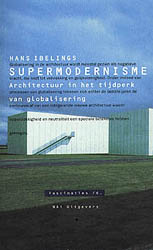
|
|
|
|
Hans Ibelings
Supermodernism
Architecture in the Age of Globalization
Publisher: NAi Publishers
Design: Joseph Plateau
Illustrated (colour and b/w), paperback, 144 pages, Text in English
ISBN 90-5662-073-8, NLG 32.50
Also available in Dutch
ISBN 90-5662-073-8, NLG 29.50
There are all kinds of indications that architecture in the nineties has set off in a new direction after the domination of the two last decades by postmodernism as a style or attitude. This trend, which can be seen in the work of architectural firms like OMA, Jean Nouvel, Dominique Perrault, Herzog & De Meuron and Toyo Ito, can be connected with one of the dominant forces of the present time: the globalization that is taking place in virtually every field. One of the consequences for architecture is the erosion of the postmodern (and deconstructivist) axiom of the uniqueness of the site. The context, let alone contextualism, no longer seems to play an important role in an increasing number of designs and buildings. Semiotic expressiveness - another postmodern theme - is also often lacking in this architecture. The author explores this new trend towards abstract, neutral architecture, which in various respects can be seen as the last word of modern architecture of the postwar International Style.
|
 |
The press about Supermodernism
A title he has used for a succinct, small book whose significance far outstrips its size
[Wall Street Journal]
That does not detract from the fact that this well-written, thoughtful and incisive essay makes clear that it amounts to more than just another style.
[NRC Handelsblad, 1998]
Much more surprising and polemical than Architectuur nu is the pocket-book Supermodernism, Architecture in the Age of Globalization by staff member Hans Ibelings of the Netherlands Architecture Institute in Rotterdam. Ibelings charts the most important design themes that have determined the appearance of architecture in the twentieth century.
[Financieel Dagblad 1998]
|
|

